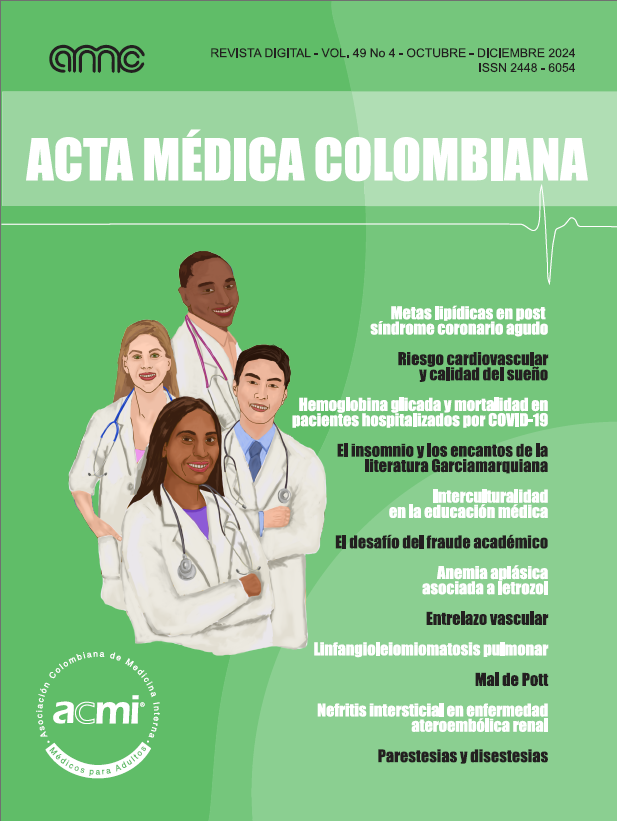Relationship between glycosylated hemoglobin levels and severe disease and mortality in patients hospitalized for COVID-19
Abstract
Objective: to determine the relationship between elevated glycosylated hemoglobin levels and severe disease and mortality from COVID-19 in patients hospitalized for SARS-CoV-2 disease at Clínica Universitaria Colombia between June 2020 and December 2021.
Materials and method: this was an observational, analytical, retrospective cohort study. Patients over the age of 18 who were admitted with a COVID-19 diagnosis confirmed by antigens or PCR were included. An association was sought between glycosylated hemoglobin (HbA1c) levels and the outcomes of severe disease and mortality. We performed a univariate analysis to describe the population, a bivariate analysis to determine the associations, and a predictive multivariate analysis, all with a 5% statistical significance level. Data was collected from electronic medical charts of patients hospitalized for COVID-19 at Clinica Universitaria Colombia between June 2020 and December 2021. Patients’ sociodemographic variables, history, use of medications, hospital laboratory exams and hospital course were extracted. The glycosylated hemoglobin variable was classified as less than 7%, between 7 and 10%, and greater than 10%, in order to evaluate its relationship with severe disease, defined as patients who were admitted to the intensive care unit or required orotracheal intubation (OTI).
Results: the cohort consisted of 329 patients. The mean age was 62.1 years (SD=14 years). The patients’ most common comorbidities were hypertension, diabetes mellitus and cardiovascular disease. The average glycosylated hemoglobin drawn on admission or in the three months prior to hospitalization was 7.08 ±1.86%. Those with an HbA1c of 7% and 10% had a 1.90 times greater risk of dying (95%CI 1.03-3.50) compared to those with an HbA1c less than 7%. They also had a 1.63 and 1.78 times greater risk of being admitted to the ICU or requiring OTI.
Conclusions: We found a cohort of patients with a high burden of comorbidities. The proportion of patients with an out-of-target HbA1c was high. Glycosylated hemoglobin behaved as a risk factor for severe disease and mortality.
Metrics
Copyright (c) 2024 Juan David Palomar Aviles

This work is licensed under a Creative Commons Attribution 4.0 International License.
Acta Medica Colombiana uses the CC-BY 4.0 license. Authors retain all rights over their work.


